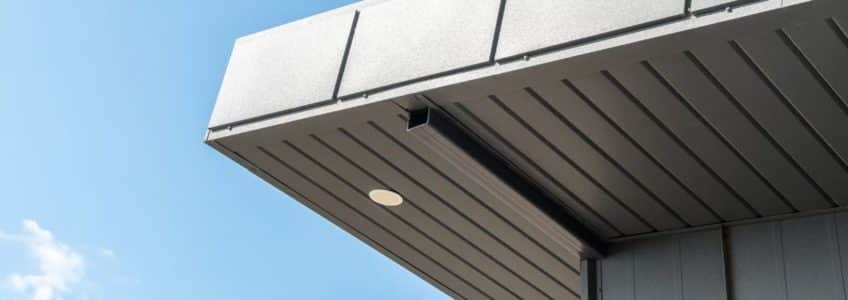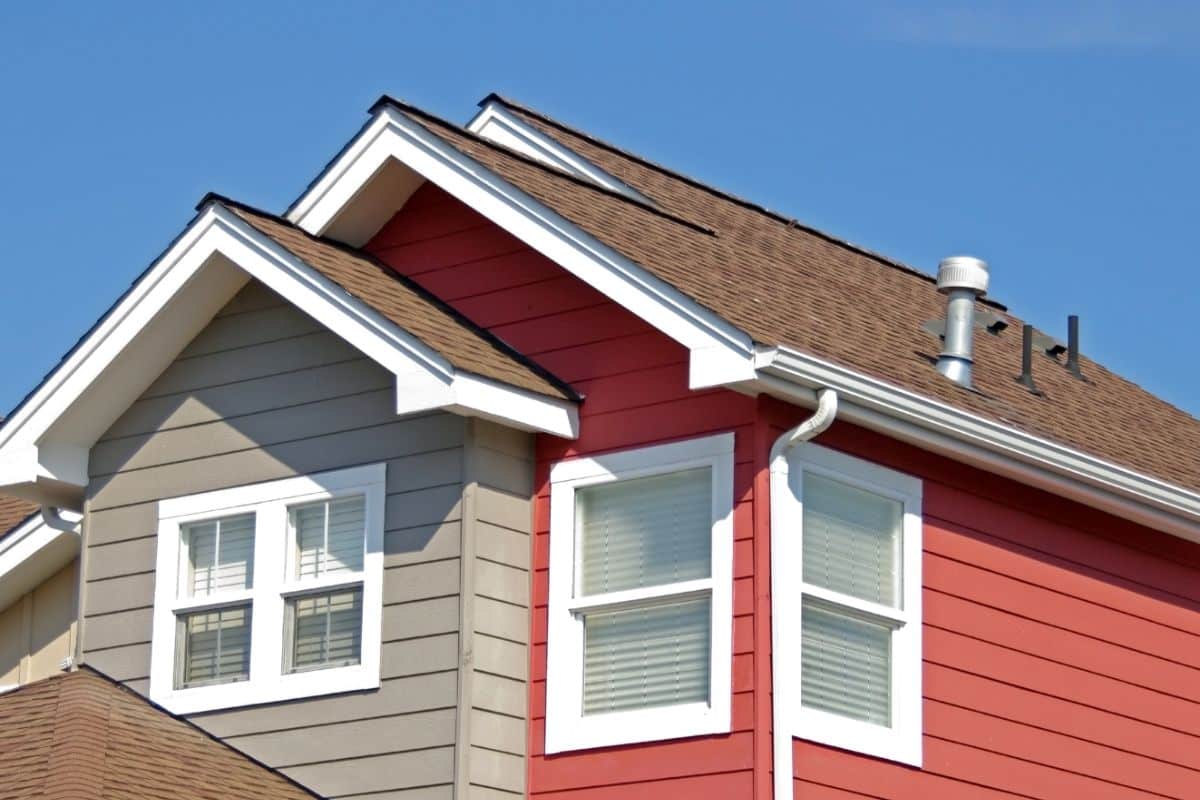
During a strong storm, it’s not just your roof or siding that needs to hold up against the elements—roof overhangs are one of the most effective yet overlooked features when shielding your home. These roof extensions go beyond the outer walls, helping direct rainwater away from your home’s siding, windows, and foundation. Without properly designed and maintained overhangs, water can pool around the structure, leak into wall systems, and cause costly moisture problems. That’s why we believe roof overhangs are more than a design feature; they’re an essential defense against storm-related damage.
What Are Roof Overhangs and Why Do They Matter?
Roof overhangs are the horizontal extensions of your roof that stretch past the exterior walls of your home. Depending on the structure, they may extend a few inches to several feet. These overhangs often include soffits (the underside of the overhang) and fascia boards, which support gutters and seal the edge of the roofing system.
We’ve seen how small design elements like this can significantly impact. When properly sized and installed as part of professional roof installation and repair services, roof overhangs keep water away from critical areas and enhance the overall resilience of your home.
Key Ways Roof Overhangs Prevent Water Damage
Roof overhangs protect your home in multiple ways during rain and storm events. Understanding how they function helps homeowners see their value and maintain them effectively.
1. Direct Rainwater Away From Exterior Walls
Rain can run straight down the siding or window frames without an overhang and fall directly near the roof’s edge. Over time, this can lead to warping, rot, or water intrusion.
Well-placed roof overhangs direct rainwater further away from the building’s structure. This helps reduce the risk of water staining the ceiling, material degradation, and leaking near doors and windows.
2. Reduce Splashback Around the Foundation
Water that falls directly near your home’s foundation can cause erosion and lead to basement moisture problems. Overhangs help control water flow away from the roof, limiting splashback and pressure near the structure’s base.
Pairing roof overhangs with an efficient gutter system ensures rainwater moves away from your home entirely, preserving siding and foundation integrity.
3. Protect Soffits and Fascia From Water Exposure
The soffit and fascia are often constructed from wood or composite materials that are vulnerable to moisture. Roof overhangs help keep these components dry by shielding them from direct rain. Such protection reduces the need for frequent repairs and prevents rot or peeling paint.
When these areas are well protected, your entire roofing edge system performs better and lasts longer.
Types of Roof Overhangs and Their Features
Choosing the right style of overhang depends on the design of your home, regional weather, and how much protection you need.
1. Standard Eaves
These are the most common types of roof overhangs. They’re usually one to two feet long and work well on most residential homes. Standard eaves provide general protection for windows, siding, and walkways.
2. Extended Overhangs
Homes in heavy-rainfall regions may benefit from larger overhangs that extend several feet from the wall. These offer more shade, reduce water exposure, and lower summer cooling costs by limiting direct sun on the walls.
3. Boxed Eaves and Open Eaves
Boxed eaves are enclosed underneath, giving a finished look and better protection from animals and moisture. Open eaves are more exposed, making them easier to inspect and maintain, but slightly more vulnerable to pests or weather.
Each design has pros and cons, but all types help mitigate water issues when built and maintained correctly. However, even the best systems can be compromised by severe weather, so it’s crucial to inspect your roof for storm damage promptly after any significant weather event.
Maintenance Tips for Keeping Roof Overhangs Effective
Like any part of your roofing system, overhangs need regular care to function properly. Here’s what we recommend.
✔️Keep Gutters Clear
Gutters are often attached to the fascia of your roof overhangs. Water backs up when they clog with debris and can spill over onto the soffit or siding. Clean your gutters at least twice a year and after major storms.
✔️Inspect for Damage
Look for signs of wood rot, peeling paint, or water stains on the soffit or fascia. These indicate that your overhangs may not be effectively keeping out moisture. Address minor issues early to avoid complete replacement later.
✔️Check for Pests
Birds, squirrels, and insects often nest in unsealed soffits or damaged fascia boards. Their presence can speed up deterioration. Make sure your overhangs are sealed and vented properly to prevent infestations.
You ensure that roof overhangs protect your home during every storm by maintaining routine inspections and basic upkeep.
Protect Your Home from Water Damage With Proper Roof Installation

Roof overhangs are an innovative design feature that also serves as a critical barrier against water. When properly installed and maintained, they help preserve your siding, reduce foundation moisture, and extend the life of your roof. Whether you’re dealing with frequent rainstorms or want to increase your home’s durability, investing in high-quality overhangs is a practical and cost-effective decision.
If you see signs of water damage or want to upgrade your exterior protection, contact Advantage Construction today. As Minnesota’s trusted licensed general construction experts, we provide comprehensive exterior solutions, including roofing, siding, windows, and gutters. Let our skilled team work with you to fortify your home, ensuring it’s ready to withstand even the most brutal storms. Your peace of mind is just a call away!
